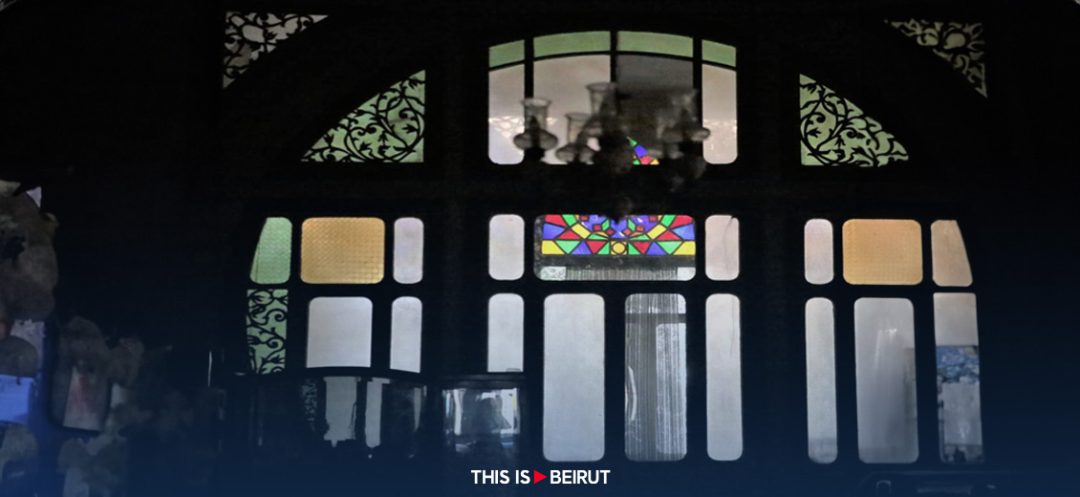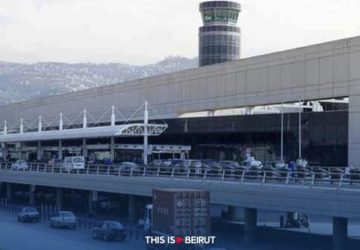Listen to the article
On Sunday, December 17, 2023, the Alice Mogabgab Gallery in Beirut was the venue for the unveiling of “Beyrouth, de verre et de couleurs,” (Beirut, of glass and colors) a seminal work by Houda Kassatly. This 260-page tome, published by Éditions Al Ayn, delves into the use of colored glass in the historic homes of Beirut.
Capturing images both before and following the catastrophic double explosion of August 4, 2020, Kassatly’s photographs showcase arches, bays, windows, and doors adorned with colored glass. These elements serve as luminous vestiges of a radiant past and bear witness to a tragically altered present, yet they hold a promise of a brighter future. Houda Kassatly, melding her keen anthropological eye with an artist’s perceptive vision, turns to the houses of Beirut, structures that epitomize the delicate interplay of beauty and fragility. Having grown up in Beirut amidst warfare, she instinctively gravitates towards these dwellings.
Equipped with her camera, Houda Kassatly observes and captures the essence of her surroundings. She persistently revisits sites to seize the light at the perfect moment, and Beirut’s sun never lets her down. Despite the departures of cherished friendships and loved ones, the sun remains a constant, its light reflecting off the colored glass, a testament to the city’s enduring cultural heritage. In a meticulous quest as a researcher, Houda Kassatly transcends the scars of war, although her book includes some photographs of ruined houses, a nod to collective memory. Yet, her focus is on the light that penetrates wounded souls, embellishing the colors of life beyond death. Through the pages, she masterfully suspends time.
Following the August 4 explosion, Kassatly confronted her shock and the temptation to forsake Beirut, a sentiment shared by many of her compatriots. However, a reawakened sense of duty towards future generations spurred her into action. Alongside her colleague Liliane Kfoury, she roamed the city, turning her lens towards age-old residences, reflective of a rich heritage. She was particularly captivated by the shimmering colored glass that danced with light, casting shadows upon the ground. Inspired by her previous collaboration with Samir Kassir, she embarked on a new project. She recounts having archives of Beirut, including slides of colored glass arcades, processed with the help of Johnny Tawk and Raffi Nordiguian.
Initially focusing on different arcade typologies, Houda Kassatly soon expanded her scope to include semi-glazed doors with wrought iron and the use of colored glass in both modest and luxurious homes. “Despite being engulfed and stifled by new buildings, the light still finds a way to penetrate and illuminate the interiors,” she emphasizes.
The concept of the book crystallized after three years of relentless research and meticulous work. Among her various projects, the exploration of colored glass stands as a testament to the quintessence of her creation as both a researcher-artist and resident-witness. Beyrouth, de verre et de couleurs mirrors the city’s thousandfold destruction and rebirth in the same radiant space, resilient against the ravages of time, the wounds of war, and the absence of the ones who left.
Houda Kassatly’s partnership with Alice Mogabgab, who has consistently supported her endeavors, was pivotal in the fruition of this work. “Unlike other conceptual photographers or contemporary artists, my work focuses on heritage photography, a genre previously not emphasized. Alice grasped the significance of my work on Beirut; other themes related to anthropology, sociology, and culture were integral to my work,” she explains.
Houda Kassatly’s art etches an indelible mark on the pages of history through light, ephemeral yet steadfast. “All my work is light; it highlights the beauty of these colored glasses and enhances the interiors,” she states. Thus, she magnifies the legendary city in its vibrant and varied hues, transcending the scars of wars and embedding memories in the pages of the future. “Most photos taken during the war focus on darkness or grayness. In my journey as a photographer, I have always encountered color. In the past, the walls of Beirut’s houses were painted in bright colors,” she remarks. She aims to capture the chromatic richness and Beirut’s enduring characteristic. “The colored glasses corroborate the impression of a city that remains spirited despite its heavy past,” she asserts.
In the Arcenciel “Culture” program that Houda Kassatly leads, the restoration of houses offers a glimmer of hope amid economic challenges and urban decline. This program aims not only to restore buildings but also to preserve a way of life, a collective history, and a cultural heritage. “One cannot describe a wounded city as ‘joyful.’ Yet, restoration offers a modest consolation in at least reviving the memory of what once was,” Houda Kassatly insists. She firmly believes in Beirut’s phoenix-like resurgence from its ashes. Following the explosion, the residents’ decision to replace their windows with colored glass, rather than just functional panes, symbolizes their attachment to the traditional Beirut house prototypes and their cultural heritage.
Houda Kassatly’s oeuvre is far more than a mere collection of photographs; it is a vibrant homage, an act of memory, and an archival restoration of a living tradition. It stands as a luminous resistance, a harmonious restitution of a serene era, bearing witness to Beirut’s endurance against the aggressive trials of time and man. Beyrouth, de verre et de couleurs is an incandescent ode to the city of Beirut. Through her lens, Houda Kassatly captures not just images but the soul of a city that refuses to be defined by its tragedies.
Instagram: @mariechristine.tayah





